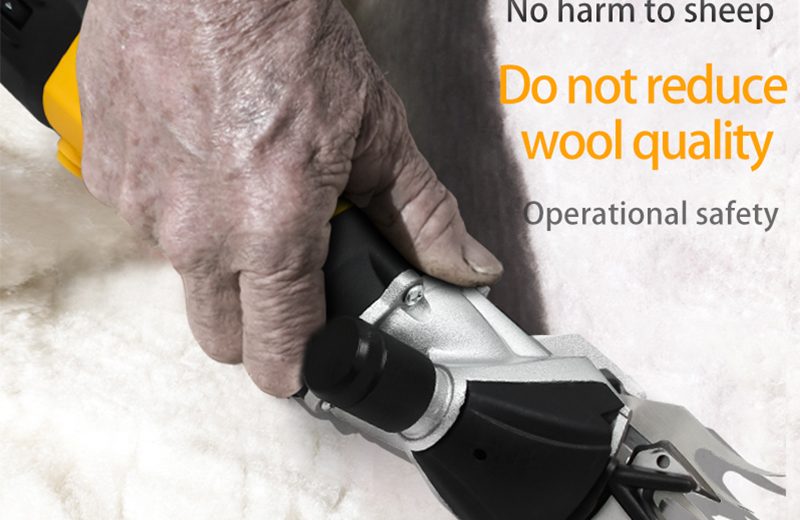1. Power and Performance
Corded Wool Shears:
-
Consistent Power: Corded shears are typically powered by electricity, providing a consistent and reliable power source. This ensures that the shears maintain a steady performance throughout the shearing process.
-
High Torque: Corded shears often have higher torque, making them more effective for heavy-duty tasks or for shearing thicker wool.
Lithium Battery Wool Shears:
-
Portability: Battery-powered shears offer greater mobility since they are not restricted by a power cord. This makes them ideal for use in remote locations or areas without easy access to electricity.
-
Variable Power: Some lithium battery shears come with adjustable power settings, allowing you to customize the speed and torque based on the task at hand.
2. Convenience and Mobility
Corded Wool Shears:
-
Limited Mobility: The main drawback of corded shears is their dependence on a power outlet. This can limit your movement and may require the use of extension cords, which can be cumbersome.
-
No Battery Concerns: Since corded shears do not rely on batteries, you don’t have to worry about running out of power in the middle of a job.
Lithium Battery Wool Shears:
-
Enhanced Mobility: The absence of a cord allows for greater freedom of movement, making battery-powered shears more convenient for use in large or open spaces.
-
Battery Life: While lithium batteries offer longer run times compared to older battery technologies, they still require recharging. It’s important to consider the battery life and charging time when choosing this option.
3. Weight and Ergonomics
Corded Wool Shears:
-
Heavier: Corded shears tend to be heavier due to the internal motor and the need for a power cord. This can lead to fatigue during prolonged use.
-
Ergonomics: Some corded models are designed with ergonomic handles to reduce strain, but the added weight can still be a factor.
Lithium Battery Wool Shears:
-
Lighter: Battery-powered shears are generally lighter, making them easier to handle and reducing user fatigue during extended periods of use.
-
Balanced Design: Many lithium battery shears are designed with a balanced weight distribution, enhancing comfort and control.
4. Maintenance and Durability
Corded Wool Shears:
-
Durability: Corded shears are often more durable and require less maintenance since they have fewer moving parts compared to battery-powered models.
-
Cord Wear: The power cord can be a point of failure over time, especially if it is frequently bent or stretched.
Lithium Battery Wool Shears:
-
Battery Maintenance: Lithium batteries require proper care to maintain their lifespan. This includes regular charging and avoiding extreme temperatures.
-
Replacement Costs: Over time, the battery may need to be replaced, which can add to the overall cost of ownership.
5. Cost Considerations
Corded Wool Shears:
-
Lower Initial Cost: Corded shears are generally less expensive upfront compared to their battery-powered counterparts.
-
No Battery Replacement: Since there is no battery to replace, the long-term costs may be lower.
Lithium Battery Wool Shears:
-
Higher Initial Cost: Battery-powered shears tend to have a higher initial cost due to the inclusion of the lithium battery and charging system.
-
Battery Replacement: Over time, the cost of replacing the battery should be factored into the overall expense.
Conclusion
Choosing between lithium battery wool shears and corded wool shears ultimately depends on your specific needs and working conditions. If you prioritize consistent power and don’t mind being tethered to a power outlet, corded shears may be the better option. On the other hand, if mobility and convenience are more important, lithium battery shears could be the ideal choice.


